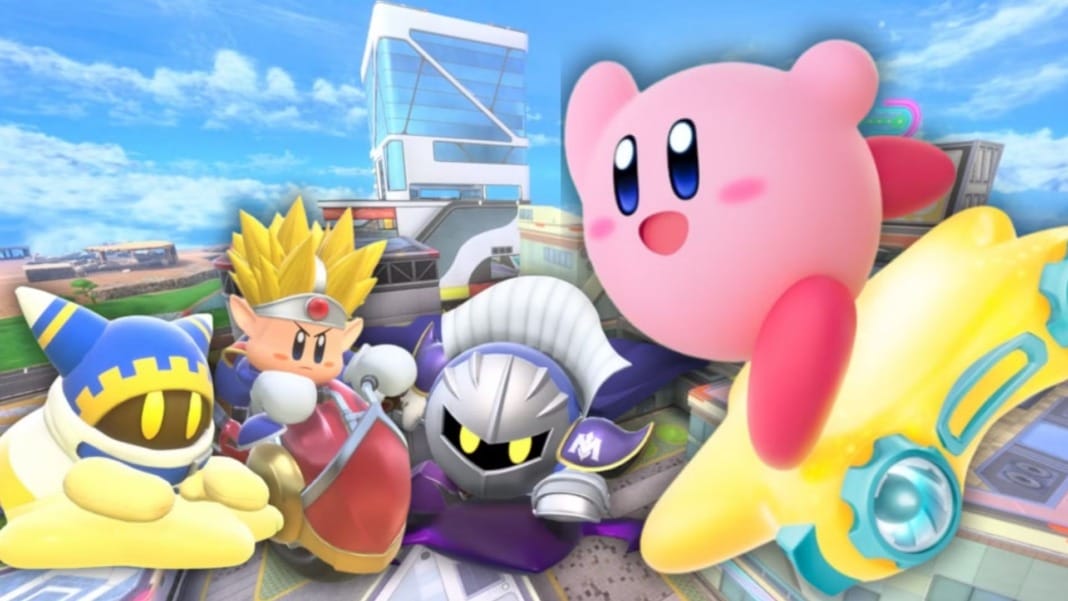Kirby Air Riders arrives as a spirited tribute to the 2003 GameCube title Kirby Air Ride, delivering a lively blend of nostalgia and modern gameplay. For many who grew up in the 2000s, the original game was an understated favourite. It never reached the same mainstream status as Mario Kart: Double Dash!!, but it became a cherished “If you know, you know” experience. Players often recall gathering around large living room televisions, filling in every achievement in the game’s checklist, transferring save files onto memory cards, and spending countless hours exploring its free-roam maps while roleplaying imaginative scenarios.
The new entry channels that same youthful energy, amplifying the sense of chaos and wonder. Kirby Air Riders maintains the simple control style that defined its predecessor. Machines automatically move forward, with steering as the main input. Pressing A or B stops the machine entirely but charges a boost, which players can use to gain an edge on sharp turns. During races, players can tail other racers along glowing trails, copy enemy abilities, and explore a mixture of new and remade courses that pay homage to the original game.
The game also includes Top Ride, a mode seen in Kirby Air Ride. It offers overhead miniature tracks with fast, light-hearted races. While charming, it remains the weakest mode compared with the game’s other offerings, just as it did in the 2003 release.
City Trial returns with fresh surprises
Although the racing modes offer accessible fun, City Trial remains the heart of the experience. In this mode, players spend five minutes in a compact open-world environment, collecting power-ups and searching for stronger machines before competing in a randomly selected stadium challenge. These challenges can focus on speed, combat, or gliding, meaning players must choose upgrades carefully to remain competitive.
Balancing changes have addressed long-standing issues. In the original game, the Shadow Star machine dominated many challenges. This time, the vehicle roster has been fully rebalanced under the guidance of the game’s creator, Masahiro Sakurai. This was evident during limited online play tests and even more apparent in the new single-player campaign, Road Trip.
Road Trip presents players with branching choices after each challenge, offering items, stat boosts or new missions. Beautifully crafted cutscenes appear every few levels, explaining the machines’ origins, though the story is delivered as short interludes rather than a continuous narrative. As the campaign progresses, players may switch machines to tackle more challenging races or enemy-heavy stages, reinforcing the new emphasis on strategy.
The redesigned City Trial map, Skyah, introduces a fresh environment inspired by elements from the original. The island features a central city, an underground garage, a forest, and a volcano. Each playthrough may alter the environment slightly, revealing hidden spaces, shortcuts and secrets. Players often find themselves reacting with surprise as new areas emerge, capturing the same sense of discovery they felt years ago.
Chaos, charm and modern enhancements
Kirby Air Riders offers a mixture of chaos and calm, blending frenzied battles with moments of peaceful progression. Some improvements focus on pure joy, such as the dramatic camera zoom when a character equips a hat, or playful gummy versions of machines that serve no purpose other than tumbling about. Others enhance gameplay, including customisable settings and helpful machine behaviours, such as vehicles approaching players on foot during City Trial.
The game’s wild nature can be both exhilarating and punishing. Collecting too many power-ups may leave a machine nearly uncontrollable by the end of a City Trial session. This encourages players to balance power with precision, choosing upgrades wisely to suit the final stadium challenge. Yet many embrace the chaos, smashing through debris, firing lasers, launching from volcanoes, and battling enormous birds. Even playful threats among friends add to the excitement as players chase legendary machine parts before the final challenge begins.
Beyond the pandemonium, there is a more serene side to the experience. Many players find themselves completing races and challenges in handheld mode, working through the extensive list of 750 in-game goals. The sound of boxes being ticked at the end of a level remains as satisfying as ever, echoing the completionist joy of the original game.
Kirby Air Riders captures the spirit of its predecessor while adapting it for modern audiences. With new systems, refined mechanics and a lovingly crafted sense of discovery, it manages to transport long-time fans back to carefree afternoons spent exploring virtual worlds with friends. It preserves the magic of childhood while offering enough new surprises to keep players returning for more.





